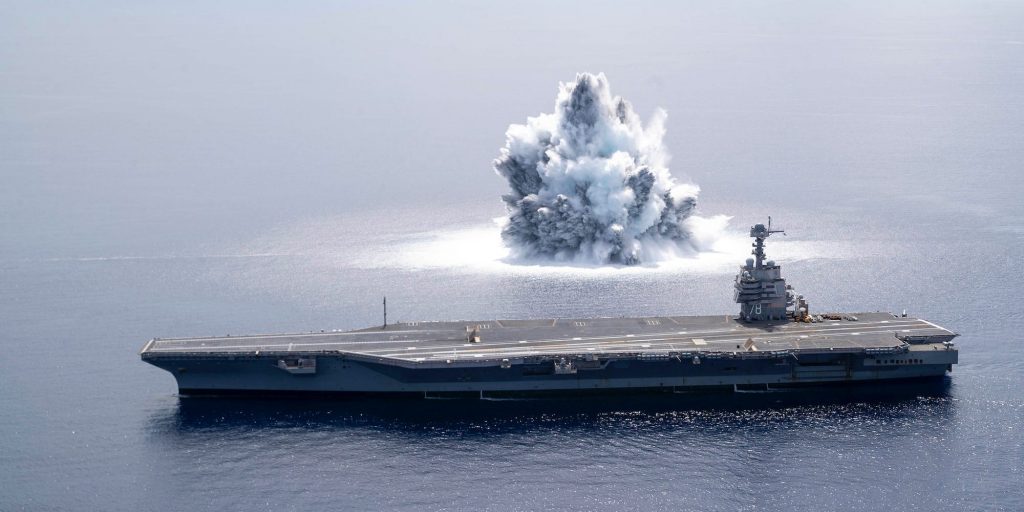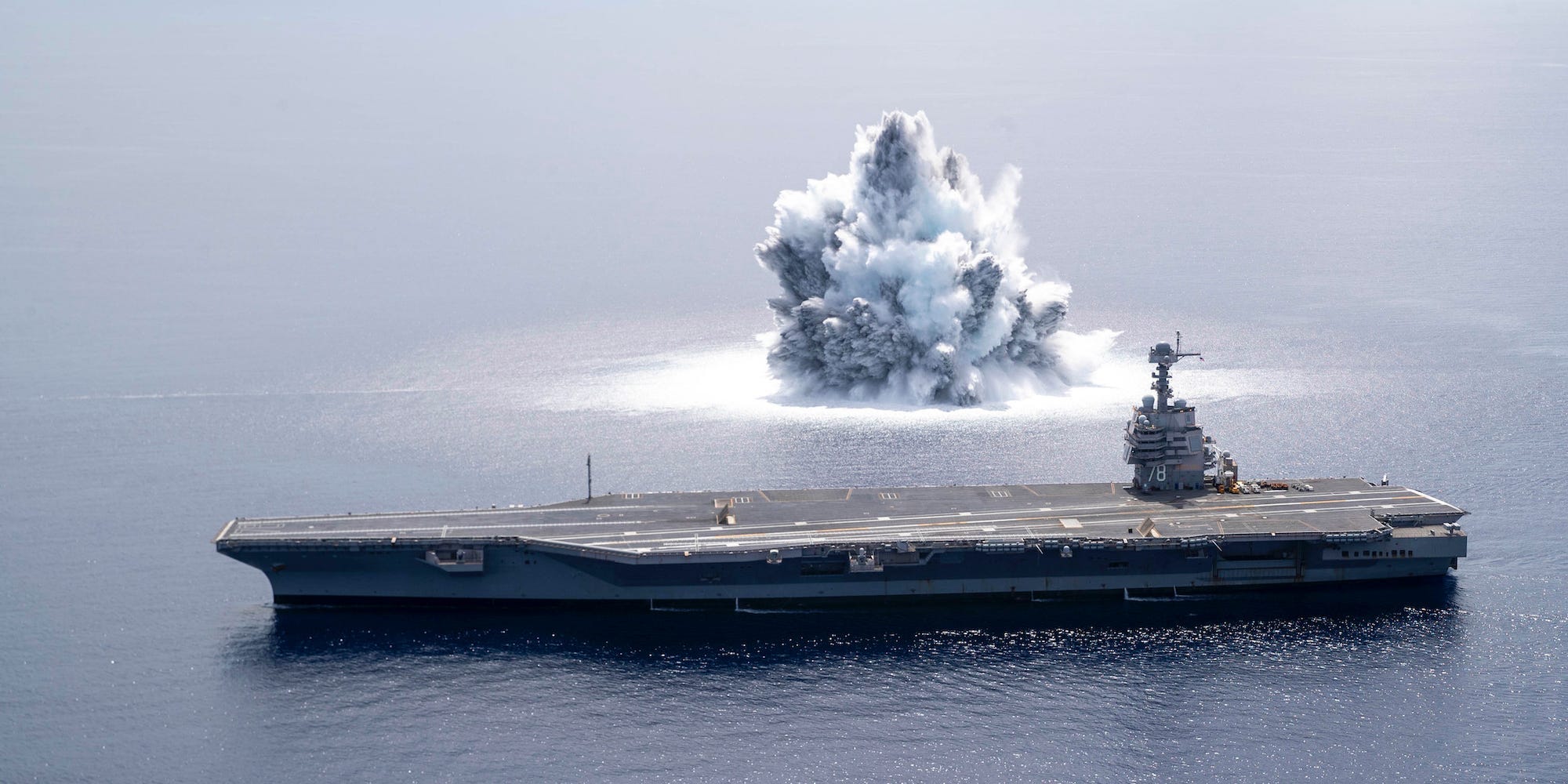
US Navy/MCS3 Riley B. McDowell
- The Navy's newest aircraft carrier, USS Gerald R. Ford, went through shock trials on June 18.
- Shock trials are meant to test how a warship's systems handle the stresses of combat.
- It's the first time a US carrier has undergone these tests since the USS Theodore Roosevelt in 1987.
- See more stories on Insider's business page.
This month, the US Navy released images and footage of its newest carrier, USS Gerald R. Ford, going through shock trials 100 miles off the Florida coast.
The tests, done with the crew aboard, involved detonating a 40,000-pound explosive off of Ford's starboard side. The explosion was so strong that it registered 3.9 on the Richter scale – roughly equivalent to a small earthquake.
It was the first of three such trials for the Ford – the next two will feature detonations closer to the ship – and was the first time a US carrier has undergone these tests since the USS Theodore Roosevelt in 1987.
While the US Navy is debating the usefulness of shock trials, the fact that they are being done on the Ford indicates that the Navy is serious about maximizing the ship's survivability against 21st-century threats.
Old tests for new threats
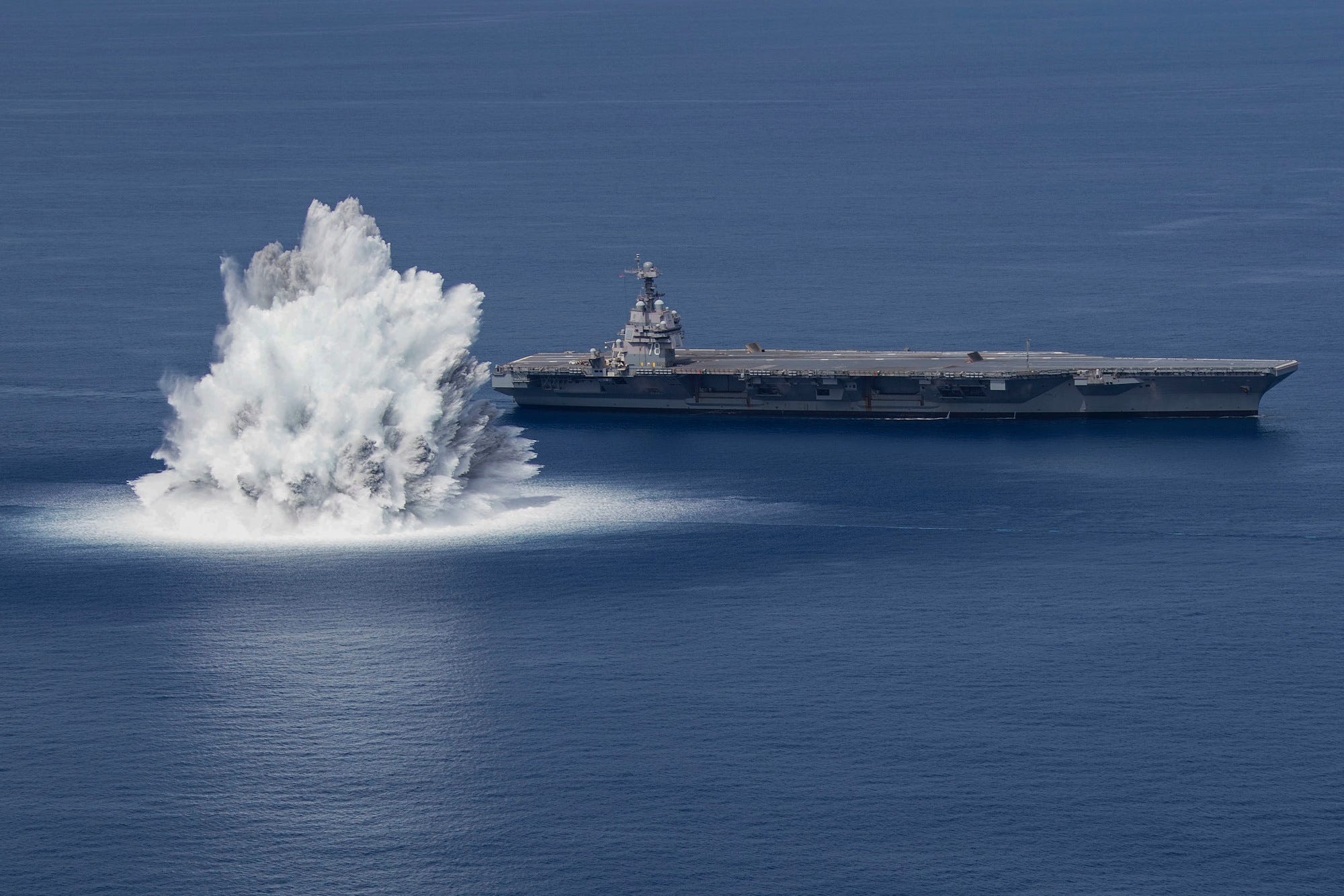
US Navy/MCS Seaman Jackson Adkins
Shock trials are meant to test how well a ship's systems and components hold up during combat and are not uncommon.
USS Jackson and USS Milwaukee, both littoral combat ships, underwent shock trials in 2016.
The amphibious transport dock USS Mesa Verde and the amphibious assault ship USS Wasp, both of which carry aircraft, went through shock trials in 2008 and 1990, respectively. USS Arkansas, a nuclear-powered guided-missile cruiser, did them in 1982.
What is unusual is the fact that the Navy conducted the shock trials on the first Gerald R. Ford-class carrier in service. The Navy typically conducts shock trials on later vessels of a given class.
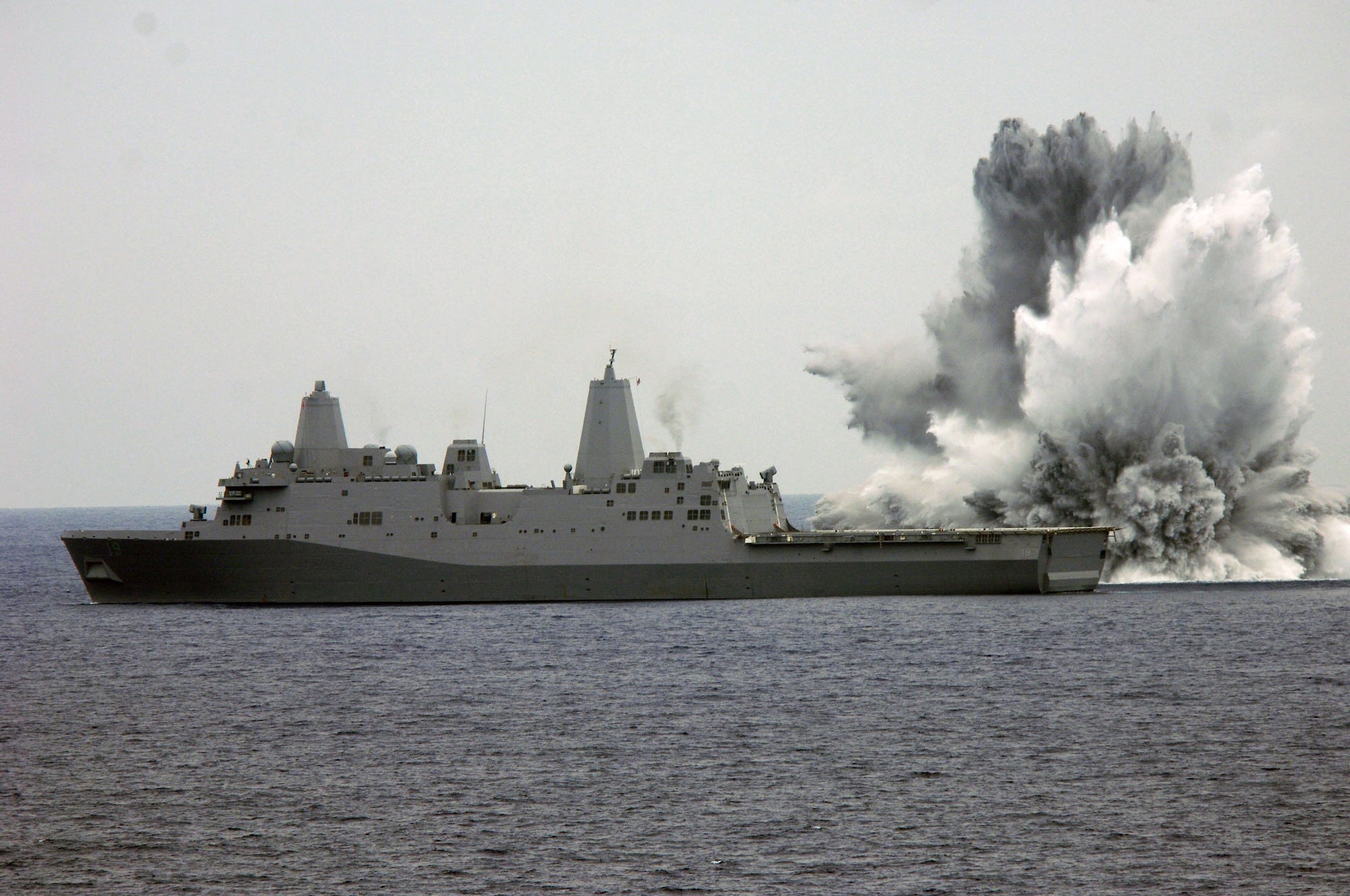
US Navy/PO2 David R. Quillen
The decision to subject Ford to the trials may be motivated by the Navy's desire to ensure that the carrier is combat-ready the moment it begins its first deployment, which is expected to be in 2022.
US Navy officials have acknowledged the increasing prevalence of modern anti-ship weaponry, particularly China's DF-21D "carrier killer" and DF-26 "Guam killer" missiles.
A recent Congressional Research Service report on the Ford-class cited China as an adversary "with highly capable anti-ship missiles" that raised questions about "the prospective survivability" of carriers in a conflict.
The same report also noted that live tests had shown that Ford "has limited self-defense capability" against anti-ship cruise missiles.
New systems and capabilities
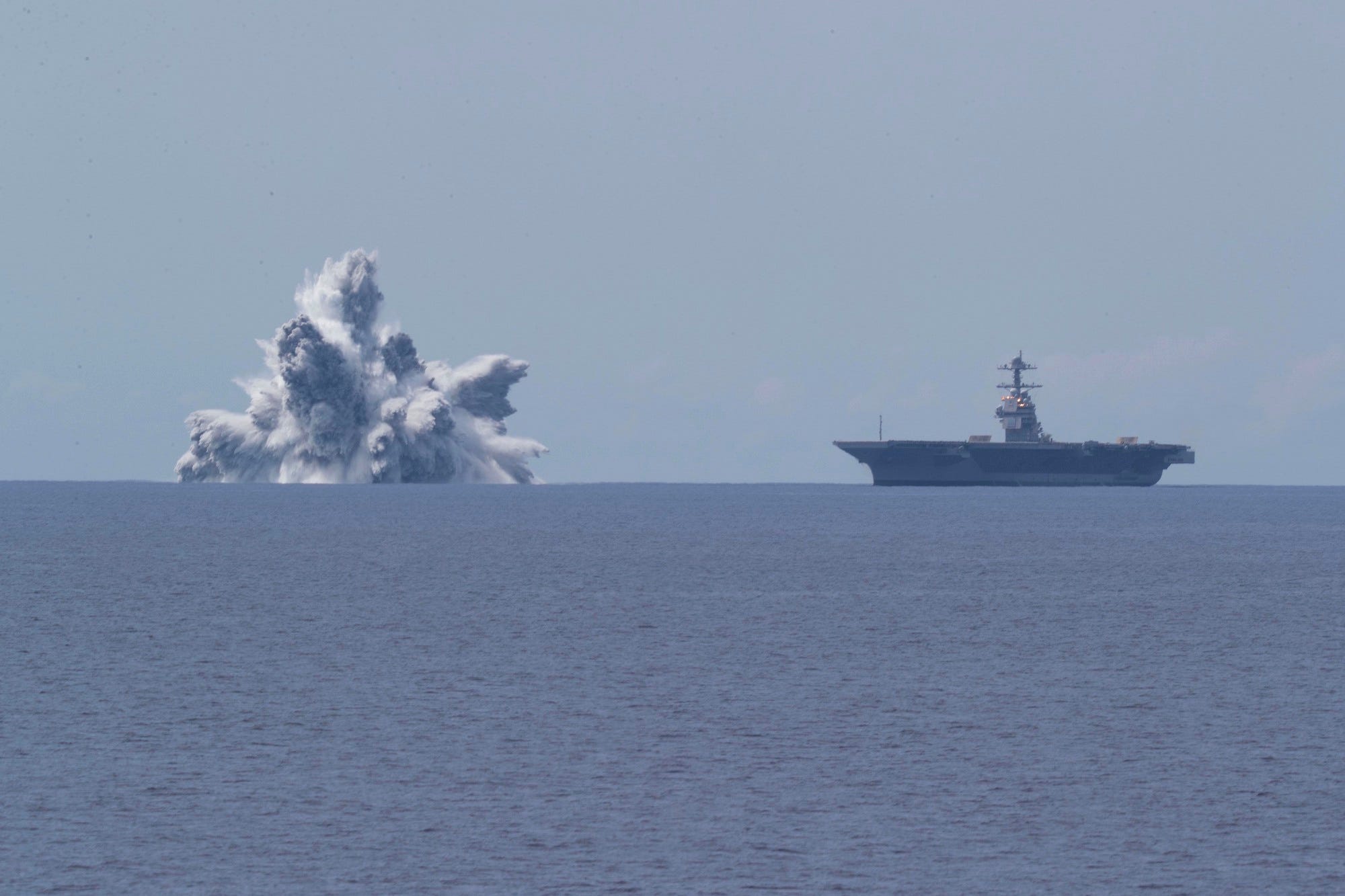
US Navy/MCS3 Zachary Melvin
The Ford also has a number of new systems and capabilities that aren't on its Nimitz-class predecessors and haven't faced combat conditions.
A new weapons elevator system, designed with modern munitions in mind, is meant to reduce how long it takes to arm aircraft.
The new Electromagnetic Aircraft Launch System uses linear induction motors instead of steam to power the carrier's catapults, ensuring faster, smoother, and more efficient takeoffs for fixed-wing aircraft.
Ford's new arresting system, known as Advanced Arresting Gear, also uses electromagnetic technology. In addition to decreasing the stress on landing aircraft, the new arresting gear allows larger unmanned aerial vehicles like the MQ-25 Stingray to land on the Ford.
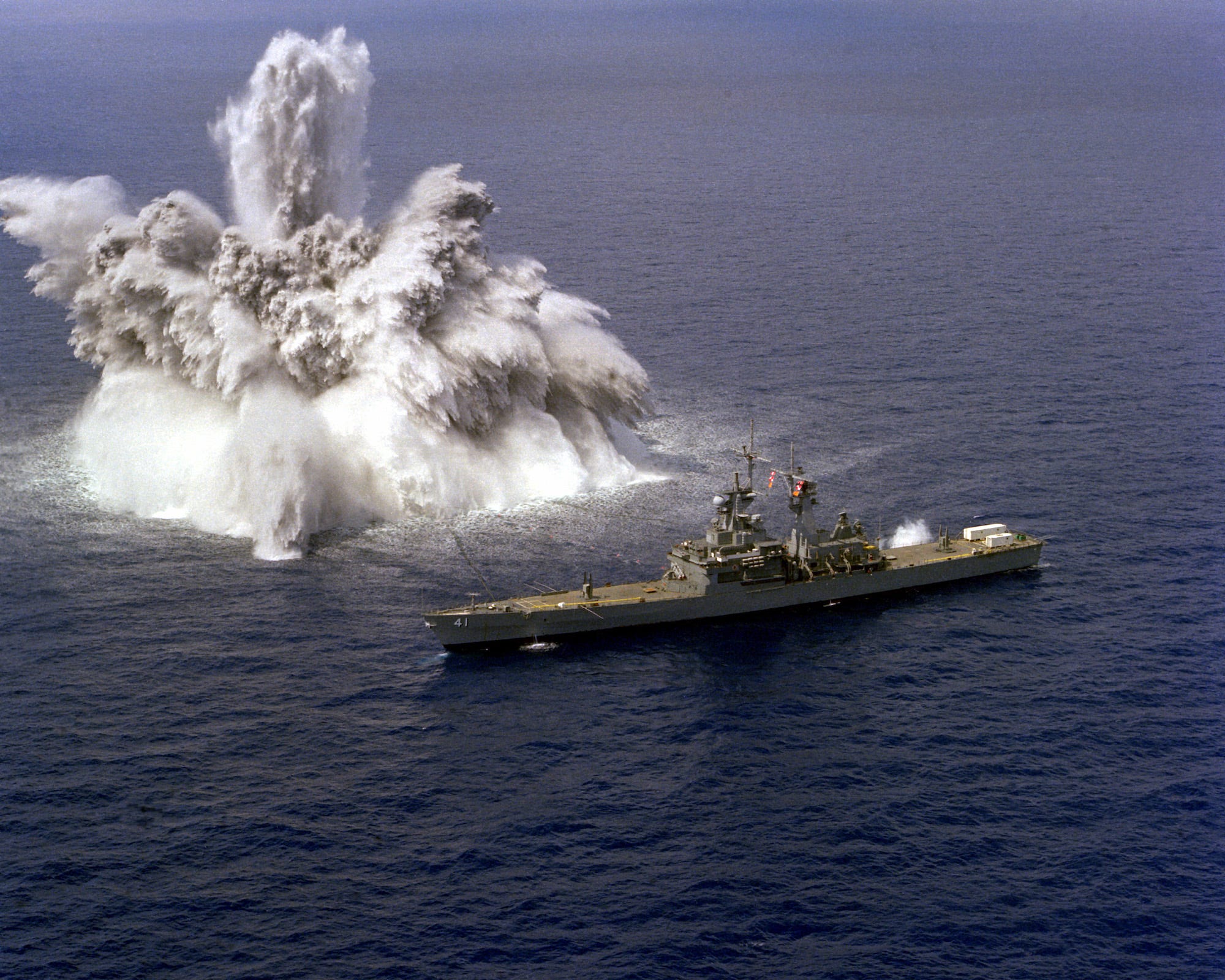
US Navy/PH1 Toon
Ford also has a new Dual Band Radar system. While Nimitz-class carriers have multiple rotating radars, Ford has one stationary multi-purpose radar that is more sensitive to aerial threats and easier to operate and maintain.
The Navy says that the new systems together allow the Ford's air wing to conduct 33% more sorties and reduce the number of crew needed to run the ship to about 4,500, down from the roughly 5,000 needed aboard Nimitz-class carriers.
Ford's two A1B nuclear reactors, which are of totally new design, generate almost three times more power than the A4W reactors used on Nimitz-class carriers, increasing Ford's electrical power capacity and generation substantially.
That power capacity allows Ford to reliably power all of its new high-tech systems and leaves the door open for possible upgrades to add systems like direct-energy weapons.
Carriers of the future
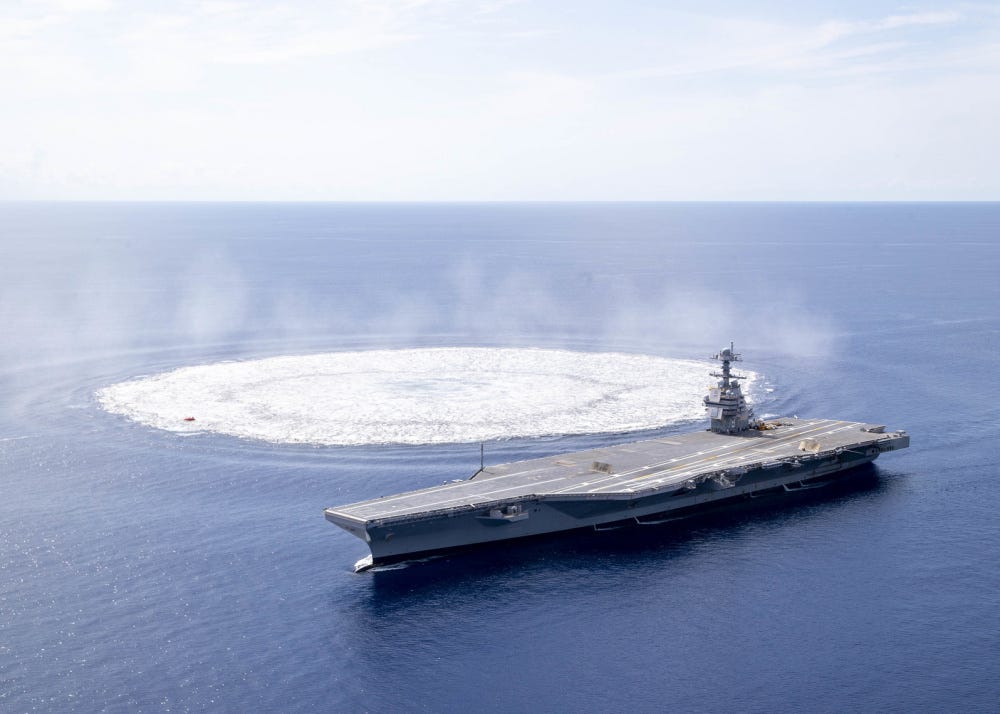
US Navy photo by Mass Communication Specialist 3rd Class Riley B. McDowell
While the capabilities of the new systems are impressive, Ford has faced a number of setbacks, and a lot of work remains ahead.
Ongoing delays on the weapon elevators meant that not all of them were ready when the shock trials started, which means they won't be fully tested during the trials.
Moreover, the Navy accepted the new carrier without it being able to handle the F-35C, which was supposed to be the backbone of the Ford's air wing.
The jet still can't fly from the Ford, but Navy officials say they hope to have at least six air wings with F-35s by 2025.
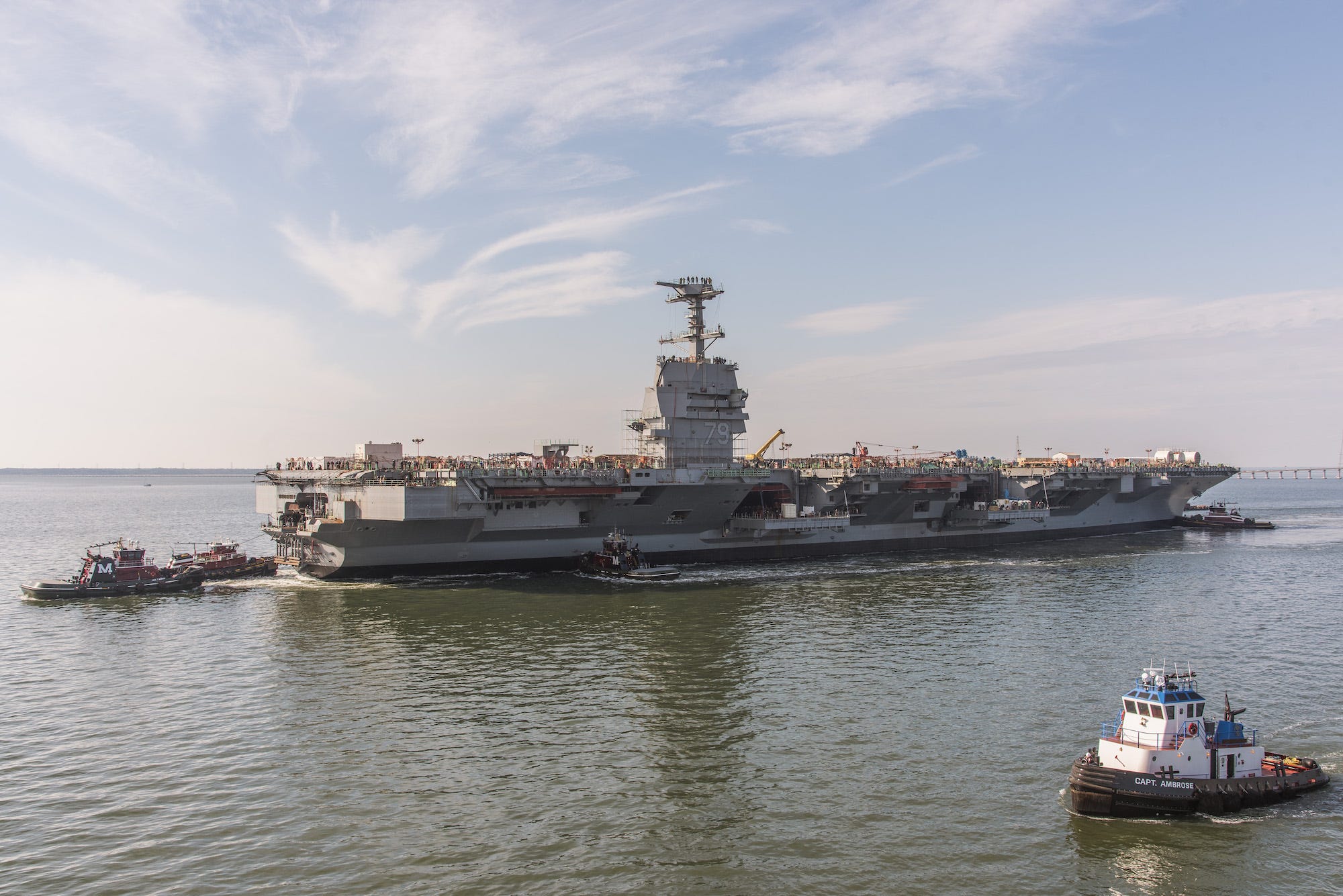
Ashley Cowan/Huntington Ignalls Industries
Despite the setbacks, the Navy hopes that Ford, which was commissioned in 2017, will start its maiden deployment in 2022.
Once the shock trials are finished, the Ford is expected to enter a month-long maintenance period, the carrier's sixth so far, which will fix any damage from the trials and install the final upgrades.
A second Ford-class carrier, the John F. Kennedy, is currently being fitted out, while a third, the Enterprise, is in the early stages of construction. Those carriers are scheduled to be delivered to the Navy in 2024 and 2028, respectively.
The fourth Ford-class carrier was ordered in 2019 and is scheduled for delivery in 2032. It will be named after Pearl Harbor hero Doris Miller, the first Black recipient of the Navy Cross.
